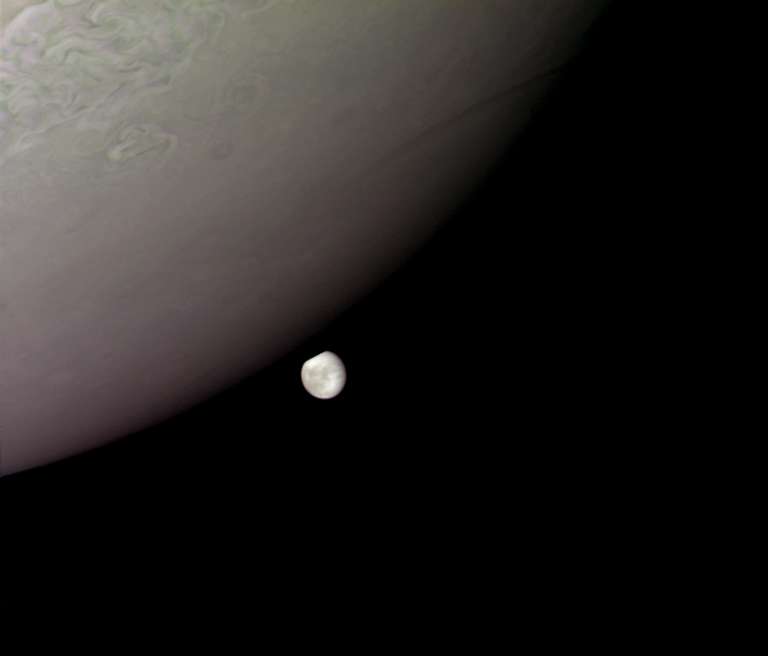Casey Dreier • Mar 05, 2014
NASA Wants to Explore Europa On the Cheap
The decision to officially embrace Europa as a future destination for NASA's robotic space program was one of the highlights from yesterday's NASA 2015 Budget request. While NASA Administrator Charlie Bolden deflected questions about the scope of this mission during a budget press conference yesterday, that hesitation seems to have lifted during a symposium held by the American Astronautical Society. NASA wants to explore Europa for less than a billion dollars, a budget that is smaller than nearly all other missions to the outer planets.
Bolden says Europa mission included in the budget would have a cost target of $1B or less. (Current studies, I believe, looking at — Jeff Foust (@jeff_foust) March 5, 2014
Grunsfeld: we will put out RFI quickly on Europa to see what one could get with New Frontiers-class mission. [that's the $1B class mission]
— Marcia Smith (@SpcPlcyOnline) March 5, 2014
Grunsfeld: will put an RFI "post haste" for ideas on what a New Frontiers-class Europa mission would look like.
— Jeff Foust (@jeff_foust) March 5, 2014
Over the past few years, JPL and APL has been working on a reduced-cost Europa concept called the Europa Clipper, which would fly by Europa on the order of 50 times over a few years to map the surface and determine the properties of the assumed ocean and ice sheet. The Clipper had an estimated cost of $2.1 billion, less than half of the originally-conceived Europa Orbiter, which was around $4.7 billion. This would place the Clipper as a "flagship" mission, though on the low side for a flagship.
Why is a billion dollars for a mission "cheap"? Mainly because Europa is a particularly difficult destination to explore. The moon orbits within Jupiter's extreme radiation field, which degrades and disrupts electrical equipment on spacecraft. To mitigate the radiation, spacecraft need to carry heavy shielding. This extra shielding adds weight; and weight adds cost. So does a long cruise out to Jupiter, which usually takes around six years, unless this mission launches on the SLS, which can reduce that to less than three. Plutonium, which the spacecraft would likely require for electrical power, also costs a decent amount of money to procure and launch due to the numerous safety reviews and permits. So we're already facing a decent amount of cost just to keep a spacecraft functioning in the Jovian environment. Only one mission has ever been sent to Jupiter with this price tag, Juno, which orbits Jupiter's poles and therefore avoids most of the nasty radiation. A Europa mission won't have that luxury.
So where does this leave the science? I would be heartbroken to waste a to waste a once-in-a-generation opportunity to explore Europa by skimping on the science. There is so much to learn about this moon and its potential for habitability, that I feel it deserves a big investment if we want to see big returns.
I'm looking to seeing the responses to this RFI (Request for Information). Scientists and engineers are endlessly creative, and if we can find a way do the same science as outlined in the Decadal Survey *and* save some money, all the better.
But we need to do Europa right. This is about the science, and the science should drive the mission.

Support our core enterprises
Your support powers our mission to explore worlds, find life, and defend Earth. You make all the difference when you make a gift. Give today!
Donate

 Explore Worlds
Explore Worlds Find Life
Find Life Defend Earth
Defend Earth

